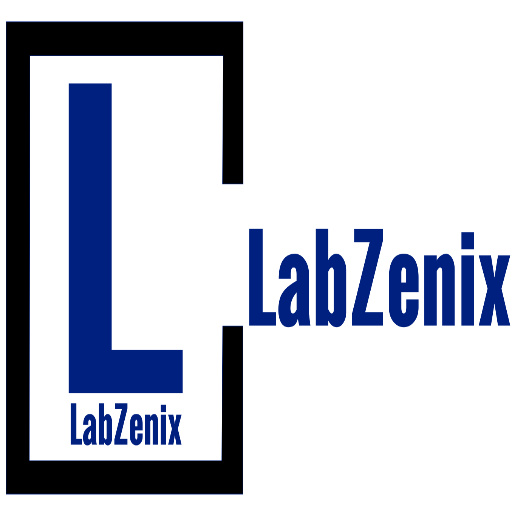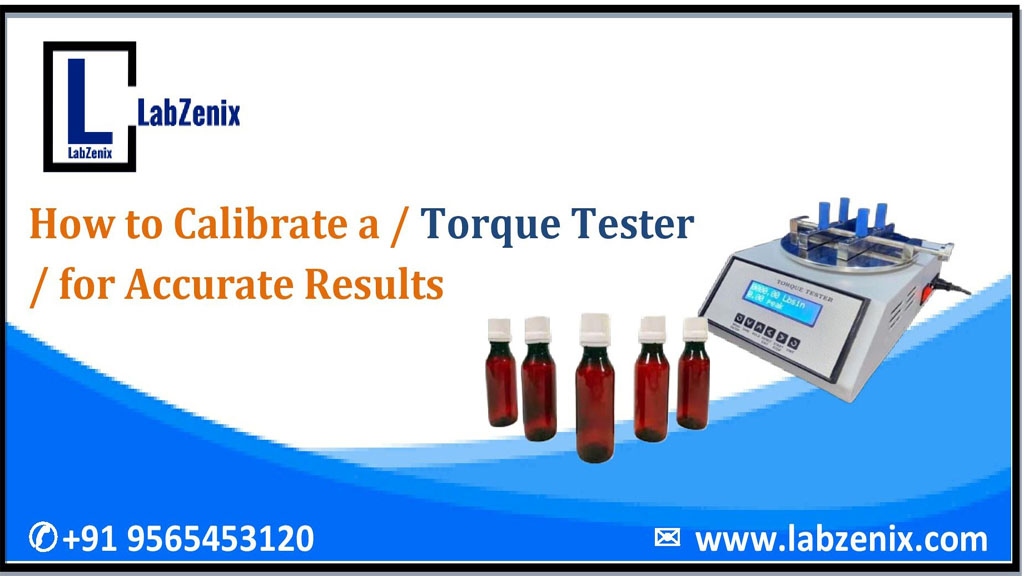How to Calibrate a / Torque Tester / for Accurate Results
How to Calibrate a / Torque Tester / for Accurate Results- LabZenix
When it involves making sure the reliability and consistency of packaging, capping, and torque-sensitive additives, a torque tester plays a essential function. But simply using a torque tester is not sufficient—correct calibration is crucial.
Description
How to Calibrate a Torque Tester for Accurate Results – LabZenix Guide
When it involves making sure the reliability and consistency of packaging, capping, and torque-sensitive additives, a torque tester plays a essential function. But simply using a torque tester is not sufficient—correct calibration is crucial. If you are thinking the way to calibrate a torque tester for correct effects, you’ve got come to the right place. This detailed manual by using LabZenix explains the whole calibration system to assist manufacturers, nice inspectors, and laboratory experts keep precision and compliance.
Why Torque Tester Calibration Is Important
It would be a very short and concise explanation on the principles of machinery calibration, machine calibration in the modern sense of torque testers, and a few industries-pharmaceutical, food and beverages, cosmetics, packaging-wherein such things could be most often sighted. These devices measure the force opening a cap on a bottle, the unlocking of a screw, or disengaging a fitting.
The risks involved include:
1) Product failure
2) Loose or overtightened closures
3) Leakage or contamination
4) Noncompliance with audit requirements
5) Unhappy customers
With these consequences looming overhead, the only thing left to learn is torque tester calibration for precise readings and one reference type of equipment would be LabZenix, which focuses mainly on precision while testing the actual products of such devices.
When Should You Calibrate a Torque Tester?
Knowing when to calibrate is just as important as knowing how. Below are ideal scenarios:
After long periods of use
Following any mechanical shock or drop
Before critical production runs
As per ISO/ASTM guidelines
On a routine monthly or quarterly schedule
If your operations depend on consistency, do not skip regular checks. Let’s now dive deeper into how to calibrate a torque tester for accurate results.
Tools Required for Calibration
Before you begin, ensure you have the right tools on hand. Calibration should be conducted using certified equipment:
Standard weight sets or dead weight testers
Torque calibration fixtures
LabZenix reference torque tester
Digital or manual torque gauges
Calibration certificate or software (optional)
Wrench or screwdriver for adjustments
By using LabZenix’s tools and accessories, you ensure compatibility, efficiency, and safety in your calibration process.
Step-by-Step: How to Calibrate a Torque Tester for Accurate Results
This section provides the most accurate and reliable method to calibrate your torque tester:
Step 1: Prepare the Torque Tester
Turn off the power and clean the device surface. How to Calibrate a / Torque Tester / for Accurate Results
Ensure it’s placed on a level and stable surface.
Remove any obstructions and secure the tester properly.
Step 2: Set to Zero
Turn the torque tester ON.
Press the “Zero” or “Reset” button.
Ensure the tester displays “0.00 Nm” or similar unit before applying any load.
Step 3: Apply Standard Torque Load
Use certified torque weights or a torque source to apply a known load.
Apply the load slowly and steadily.
Read and record the torque value displayed on the tester.
Step 4: Compare the Results
Match the displayed value with the known applied torque.
Note the difference (if any).
If the deviation is within tolerance, the tester is accurate.
Step 5: Adjust the Torque Tester
If the result is outside tolerance, use the provided calibration knobs or software tools.
Enter the calibration mode (usually holding the “Menu” or “Cal” button).
Adjust the internal settings until the output matches the known input.
Step 6: Recheck Multiple Points
Apply various known loads (e.g., 20%, 50%, 100% of full scale).
Repeat the process to ensure consistency across the range.
Document the data for traceability.
Step 7: Save & Validate
Once adjustments are complete, exit calibration mode.
Save the new settings.
Print or digitally save a calibration certificate, if applicable.
This step-by-step method answers the core of the query, how to calibrate a torque tester for accurate results, using precise and validated procedures.
How to Calibrate a / Torque Tester / for Accurate Results
Common Calibration Errors and How to Avoid Them
While the process may seem straightforward, common mistakes can lead to faulty calibration:
Using non-certified weights
Calibrating in a non-controlled environment
Ignoring environmental factors like temperature or humidity
Skipping full-scale calibration checks
Overlooking internal software settings
To avoid such mistakes, always trust professional-grade tools like those offered by LabZenix. Our torque testers and calibration accessories are designed to work in synergy for flawless results. How to Calibrate a / Torque Tester / for Accurate Results
LabZenix Torque Tester Calibration Services
If you lack the tools or expertise to perform internal calibration, LabZenix provides professional calibration services. Our experts use ISO-certified procedures to ensure all your torque testing equipment remains compliant and accurate. How to Calibrate a / Torque Tester / for Accurate Results
Benefits of LabZenix calibration service include:
ISO/IEC 17025 traceable certificates
On-site and off-site service options
Fast turnaround
Calibration stickers and documentation
Post-calibration analysis report
Whether you’re calibrating a digital torque tester, manual torque device, or a fully automated system, LabZenix has you covered.
Frequently Asked Questions (FAQs)
Q1. Which is the most suitable frequency for calibration testing as per the torque tester?
A: It should be considered upon usage of the person wanting them, but most industries advocate for monthly active calibration or at least quarterly calibration. However, for the extreme precision required in many applications, you may have an increased frequency for the audit.
Q2. Can I perform calibration on my torque tester by my own intervention?
A: Understanding is good; yes, you can carry out calibrations provided you have the right instruments. Please provide a professional calibration service if you require it for certification or accurate results in critical environments.
Q3. What would be considered as allowable compensation range during calibration of these instruments?
A: ±1% tolerance is considered as adequate deflection. You may refer to your instrument manual or the LabZenix technical data sheet for the otherwise specified tolerances.
Q4. Is software calibration better than manual calibration?
A: Sure, software calibration is much more precise and gives provision to digital record taking. However, the accuracy rate is relative to correct implementation when its manual process is carried out in parallel. This is enabled in the two models of LabZenix torque testers.
Q5. Will I need to recalibrate for software updates?
A: Yes—the firmware or software updates call for a test if made completely calibrated to regulations.
Q6. Which calibration LabZenix torque tester with the easiest calibration?
A: Features are made available to its operator such as guided software instructions, zeroing assistance, and user-friendly calibration modes in our Digital Torque Tester, LZTT-D. Thus, it is good for use by first-time mainframe users and professionals alike.
Q7. How do I determine if calibration has been executed properly?
A: In using vv for check, we can compare your newly derived reading with certified reference standard equipment. Should you at any time feel uncertain, it never hurts to approach LabZenix experts for a calibration audit.
Q8. What would be the difference between calibration and verification?
A: Calibration refers to making the torque tester adjustments according to the standard. Verification refers to its checking already against the standard followed by performance characteristics. How to Calibrate a / Torque Tester / for Accurate Results
Q9. How long does calibration take?
A: Generally, manual calibration consumes 30-60 minutes on average. LabZenix automated setups can carry it out below 20 minutes. How to Calibrate a / Torque Tester / for Accurate Results
Q10. Will environmental temperature matter during calibration?
A: For sure. The values of torque are very sensitive to changes in temperature. It is recommended by LabZenix to calibrate in a controlled environment of 20°C-25°C. How to Calibrate a / Torque Tester / for Accurate Results
Contact – LabZenix


Pingback: How a /Torque Tester/ Improves Bottle Seal Performance » LABZENIX TESTING INSTRUMENTS